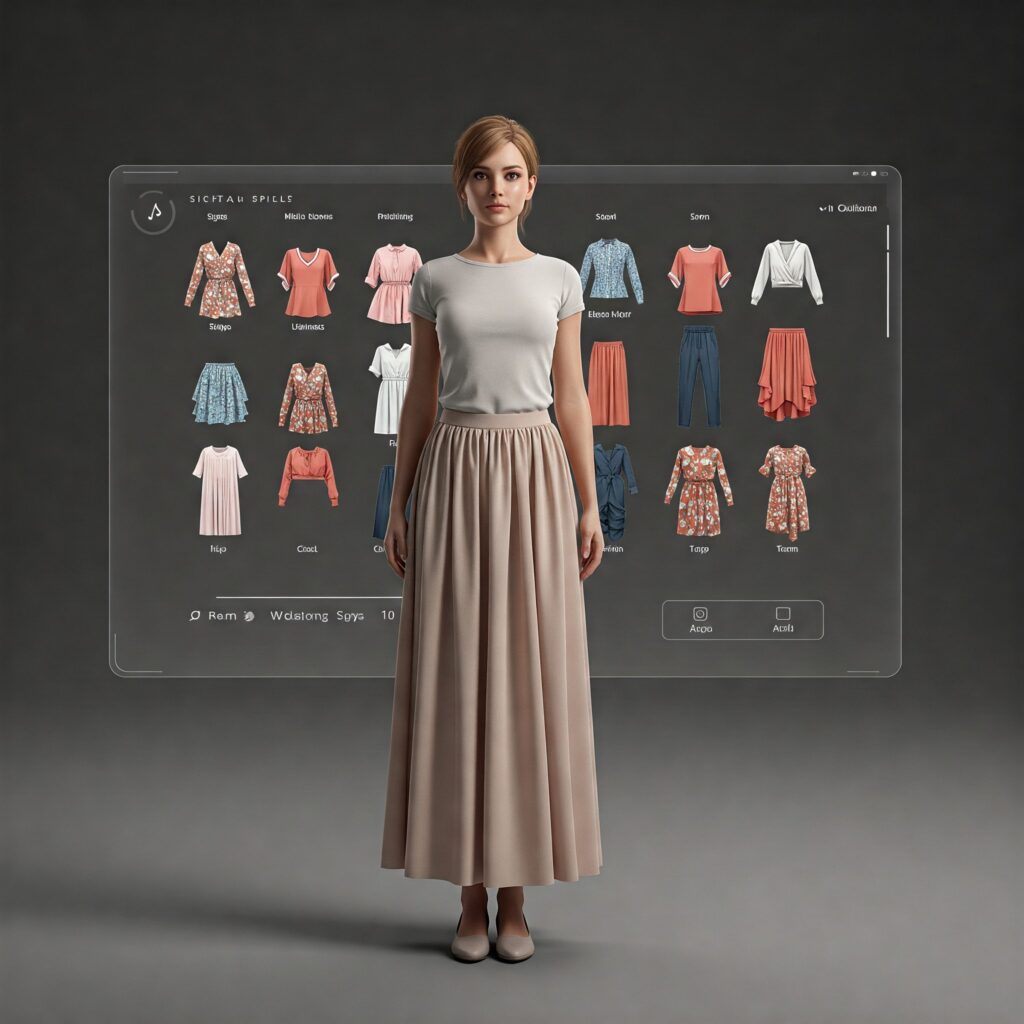Maximize Efficiency: How Collection Management Software Transforms Fashion Brands
In the dynamic and fiercely competitive world of fashion, brands are constantly striving for that elusive balance between creative brilliance and operational efficiency. It’s no longer enough to simply design beautiful garments; brands must also master the intricate dance of production,
logistics, and marketing. Collection management software emerges as the conductor of this complex orchestra, a digital maestro that harmonizes every aspect of a fashion collection’s journey. Let’s delve deep into how this technology is reshaping the industry, empowering brands to achieve unprecedented levels of efficiency and innovation.
The Digital Backbone: Understanding Collection Management Software
Collection management software is more than just a digital filing cabinet; it’s a comprehensive ecosystem designed to orchestrate the entire lifecycle of a fashion collection. It’s a centralized, cloud-based hub that consolidates all critical data, from the initial spark of inspiration to the final product delivery. This includes design sketches, fabric swatches, color palettes, product specifications, production timelines, marketing assets, and even customer feedback. By acting as a single source of truth, it eliminates the chaos of scattered documents and fragmented communication, fostering seamless collaboration and data-driven decision-making.

The Imperative of Efficiency: Why Collection Management Software is Essential
In an industry defined by tight deadlines, intricate supply chains, and demanding consumers, efficiency is not just a luxury; it’s a necessity. Collection management software addresses the multifaceted challenges faced by modern fashion brands by:
- Breaking Down Communication Silos: Facilitating seamless information flow between designers, production managers, marketers, and suppliers.
- Automating Repetitive Tasks: Reducing manual data entry, streamlining approvals, and automating report generation, freeing up valuable time for creative endeavors.
- Providing Real-Time Visibility: Offering instant access to collection progress, inventory levels, and production schedules, enabling proactive decision-making.
- Minimizing Errors and Delays: Reducing the risk of miscommunication, data discrepancies, and production bottlenecks, ensuring on-time delivery.
- Enabling Data-Driven Insights: Generating actionable insights into collection performance, empowering brands to make informed choices based on real-time data.
Unpacking the Core Features: The Anatomy of Effective Software
Let’s dissect the key functionalities that make collection management software an indispensable tool for fashion brands:
Advanced Visual Asset Management: Cultivating Creative Expression
- High-Resolution Image Handling: Supporting the storage and management of large, high-quality images of sketches, fabric swatches, and finished products, ensuring visual fidelity.
- Dynamic Digital Mood Board Creation: Allowing designers to create interactive mood boards with drag-and-drop functionality, incorporating images, videos, color palettes, and annotations.
- Annotation and Markup Tools: Enabling teams to add comments, markups, and annotations directly on visual assets, facilitating clear communication and feedback.
- Version Control and History Tracking: Maintaining a comprehensive history of all visual assets, ensuring that teams always have access to the latest versions and previous iterations.
- 3D Model and Virtual Prototyping Integration: Allow for the viewing and manipulation of 3D garment models.
Comprehensive Product Data Management: The Foundation of Accuracy
- Detailed Product Specifications: Capturing all essential product information, including materials, dimensions, colors, sizes, care instructions, and sustainability certifications.
- Bill of Materials (BOM) Management: Creating and managing detailed BOMs, tracking material costs, availability, and lead times.
- Sample Management and Tracking: Tracking the creation, approval, and shipment of samples, ensuring quality control and adherence to design specifications.
- Costing and Pricing Tools: Providing tools for calculating product costs, setting retail prices, and analyzing profit margins.
- Data Import/Export Capabilities: Allowing for seamless data transfer between the software and other systems, such as ERP, PLM, and e-commerce platforms.
Robust Collaboration and Communication Tools: Fostering Team Synergy
- Real-Time Collaboration and Co-Editing: Enabling multiple users to work on the same project simultaneously, with instant updates and notifications.
- Task Management and Workflow Automation: Assigning tasks, setting deadlines, automating approval processes, and tracking progress.
- Integrated Communication Channels: Providing built-in messaging, chat, video conferencing, and file-sharing tools.
- User Permissions and Access Control: Ensuring that sensitive information is only accessible to authorized personnel, maintaining data security and confidentiality.
- Supplier Collaboration Portals: Enabling seamless communication and data sharing with external suppliers, streamlining the supply chain.
End-to-End Production Tracking and Management: Optimizing the Supply Chain
- Production Scheduling and Monitoring: Tracking production progress in real-time, identifying bottlenecks, managing deadlines, and optimizing resource allocation.
- Inventory Management and Stock Control: Monitoring inventory levels, managing stock movements, preventing stockouts and overstocking, and forecasting demand.
- Quality Control and Inspection Tools: Tracking quality control checks, managing inspections, ensuring product standards, and documenting defects.
- Shipping and Logistics Management: Tracking shipments, managing logistics, optimizing delivery routes, and ensuring timely delivery.
- Reporting and Analytics: Generating detailed reports on production efficiency, inventory levels, shipping performance, and sales data, providing actionable insights for decision-making.
Tailored Benefits for Diverse Fashion Business Models
- For Independent Designers and Startups: Streamlining operations, managing limited resources, gaining a competitive edge, and building a strong brand foundation.
- For Small to Medium-Sized Brands: Enhancing collaboration, improving efficiency, scaling operations, and expanding market reach.
- For Large-Scale Apparel Companies: Centralizing data, optimizing complex workflows, ensuring consistency across global operations, and maximizing profitability.
- For Production Managers and Supply Chain Professionals: Gaining real-time visibility, optimizing production schedules, ensuring timely delivery, and minimizing costs.
Strategic Considerations for Selecting the Right Software
- Scalability and Flexibility: Choosing a solution that can adapt to the brand’s evolving needs, accommodating future growth and expansion.
- Integration Capabilities: Ensuring seamless integration with existing systems, such as ERP, PLM, e-commerce platforms, and CRM software.
- User Experience and Training: Prioritizing user-friendly interfaces, providing comprehensive training, and offering ongoing support.
- Vendor Support and Reliability: Selecting a reputable vendor with a proven track record of customer support, technical expertise, and system reliability.
- Security and Data Privacy: Ensuring that the software meets industry standards for data security and privacy, protecting sensitive information from unauthorized access.
- Bold: “Prioritize a collection management software that not only addresses your current
operational needs but also anticipates your future growth and evolving market
demands.”
Implementing Collection Management Software: A Phased Approach to Success
- Phase 1: Needs Assessment and Planning: Conducting a thorough assessment of the brand’s requirements, defining clear objectives, and developing a detailed implementation plan.
- Phase 2: Data Migration and System Configuration: Transferring existing data to the new system, configuring the software to meet the brand’s specific needs, and customizing workflows.
- Phase 3: User Training and Adoption: Providing comprehensive training to all users, ensuring seamless adoption of the new system, and offering ongoing support.
- Phase 4: Ongoing Monitoring and Optimization: Continuously monitoring system performance, gathering user feedback, making adjustments as needed, and optimizing workflows for maximum efficiency.
The Evolving Landscape of Collection Management in Fashion
- AI-Driven Predictive Analytics: Forecasting trends, optimizing inventory, personalizing customer experiences, and automating decision-making.
- Virtual and Augmented Reality Integration: Enhancing design visualization, creating virtual showrooms, improving customer engagement, and enabling virtual try-ons.
- Blockchain Technology Integration: Ensuring supply chain transparency, tracking product provenance, combating counterfeiting, and promoting ethical sourcing.
- Sustainability Features: Tracking material usage, managing waste, promoting ethical sourcing, and enabling circular fashion practices.
- Increased Mobile Functionality: Allowing for full access to data and functionality from any mobile device, enabling on-the-go collaboration.
Embarking on Your Digital Transformation Journey
Ready to unlock the full potential of your fashion brand? Start by exploring the vast array of collection management software solutions available and selecting the one that aligns with your unique vision, goals, and operational requirements.
